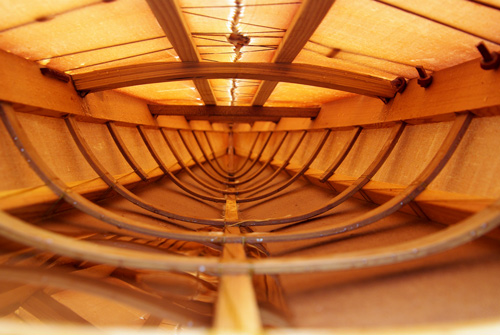
I started Cape Falcon Kayak with the idea that a skin-kayak shouldn't have to make excuses for itself, that skin-on-frame kayaks can be as tough, as comfortable, and paddle every bit as well as thier fiberglass progeny. We've all seen a skinboat that a buddy built in his garage, and sure, it's a neat idea, but usually it's not so comfortable or fun to paddle. That's not what Cape Falcon Kayak is about. I am a fervent paddler and an obsessive craftsman, and for the last seven years I have worked continuously, on over three hundred kayaks, to build the boats that I want to paddle in the harsh coastal conditions that I enjoy. I've never 'talked myself into' loving a skin-on-frame kayak. I simply build them, and if I don't like how they paddle, I build another. If I have to meet the needs of specifc paddler, I can change just that one boat. With skin-on-frame each kayak evolves into the next one, allowing instant integration of new features and ideas.
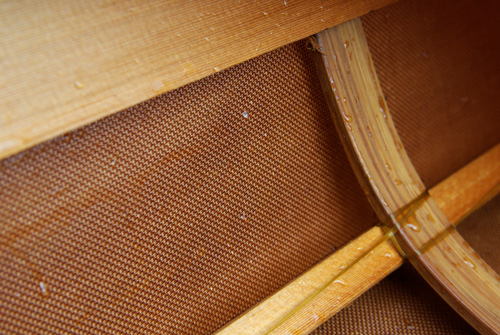
After years of brutalizing skin kayaks in conditions that would scare the drypants off of many kayakers, I've come up with a solid recipe for what a skinboat needs to survive while skill keeping it ultralight. For the most of the framework I use lightweight and naturally rot-proof western red cedar, which I often cut myself from salvage logs. The ribs are a high tech bamboo laminate, a renewable material much stronger and lighter than solid wood. The kayaks are tied with flat artificial sinew that is difficult to break and won't leave bumps under the skin. The kayak 'skin' is a 9 or 12oz ballistic nylon, the same stuff that they used to make bullet proof vests from. Finally the whole thing is coated with spirit line's proprietary, super tough 2 part polyurethane, the only product in existance designed specifically for coating skin boats.
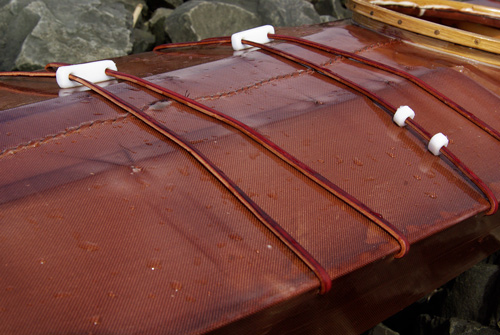
People often see the leather deck lines and assume they are for traditional effect, and it's true they do look pretty neat. The reason I use them though is becuase I am sick of the cheap bungies and breakable fittings I see on other kayaks. I paddle in places where failure is simply not an option, I NEED to rely on the rigging not to slip or break. Even if you are just paddling on the pond, shouldn't you expect the same? The oil tanned latigo I use is tough and salt water tolerant, not to mention expensive! You can carry, tie onto, or tow from any deck line on these kayaks. Every deck line is strong enough to do a pull up on, guaranteed. You can put something on deck lock it down with a toggle, and it will still be there after you break out through the surf zone. Bone or salvaged HDPE plastic toggles are added in either a traditional pattern for a replica kayak, or in a custom pattern to meet your specific needs.
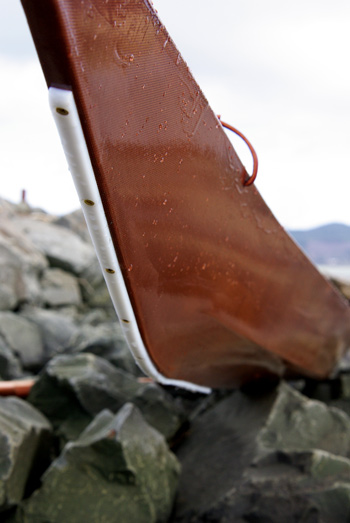
Years of dragging these boats across parking lots and up beaches has shown me where the kayaks are likely to wear through, so I add armor to the those places. On replica hunting kayaks I reproduce the traditional pattern that was designed to wear against floe ice.
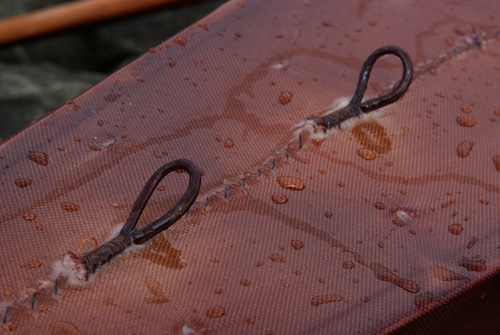
When I design my own boats I put the extras where I want them. Similarly, when reproducing traditional Eskimo hunting kayaks I do my best to add all the little details that make these kayaks so intriguing. On this kayak, the original had two small loops at the bow which captured the toggle at the end of a seal skin rifle case, so I added them here as well.
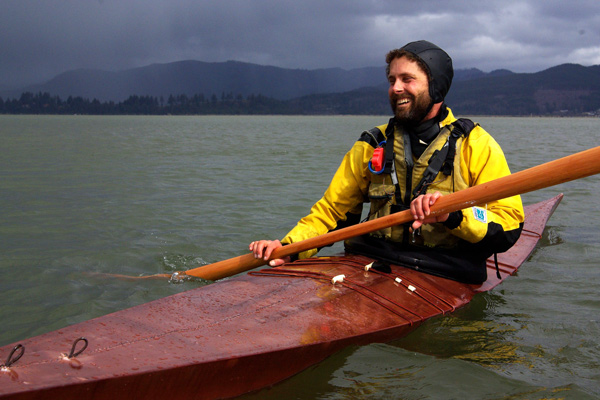
Whether you build it with me or buy it from me, my goal is always to get you into the right kayak for your paddling lifestyle, sometimes for far less than a production boat. Classes are eight days long, cost $1300 dollars, you leave with a complete kayak and a paddle. A custom kayak costs $2000, which is pretty good for a boat built specifically for your body and needs. Shipping anywhere in the country is only $250. What you end up with is a kayak that is as much a work of art as it is a paddling machine, I guarantee it. If you are unsatisfied in any way with the boat you buy or build, I will replace it or refund your money, period. That said, I've never had to take back a single boat. Once you lift a 25 pound kayak onto your car with one hand, chances are that ol' 55 lb glass boat (or 70 lb plastic) won't be seeing much of the water anymore.
Brian Schulz
owner/teacher/builder
Cape Falcon Kayak home page